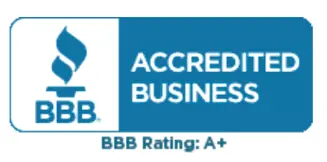-
SELEXIPAG (se LEX i pag) treats pulmonary arterial hypertension (PAH), a condition that causes high blood pressure in the lungs. It works by relaxing your blood vessels and lowering the blood pressure in your lungs, which makes it easier for your heart to pump blood to the rest of your body. It can also help you breathe easier and be more active.
This medicine may be used for other purposes; ask your health care provider or pharmacist if you have questions.
-
Take this medication by mouth. Take it as directed on the prescription label at the same time every day. Do not cut, crush, of chew this medication. Swallow the tablets whole. You can take it with or without food. If it upsets your stomach, take it with food. Keep taking it unless your care team tells you to stop.
Talk to your care team about the use of this medication in children. Special care may be needed.
Overdosage: If you think you have taken too much of this medicine contact a poison control center or emergency room at once.
NOTE: This medicine is only for you. Do not share this medicine with others.
-
Do not take this medication with any of the following:
-Gemfibrozil
This medication may also interact with the following:
-Clopidogrel
-Deferasirox
-Rifampin
-Teriflunomide
This list may not describe all possible interactions. Give your health care provider a list of all the medicines, herbs, non-prescription drugs, or dietary supplements you use. Also tell them if you smoke, drink alcohol, or use illegal drugs. Some items may interact with your medicine.
-
Visit your care team for regular checks on your progress. Tell your care team if your symptoms do not start to get better or if they get worse.
-
If you miss a dose, take it as soon as you can unless it is more than 6 hours late. If it is more than 6 hours late, skip the missed dose. Take the next dose at the normal time.
-
Side effects that you should report to your care team as soon as possible:
-Allergic reactions—skin rash, itching, hives, swelling of the face, lips, tongue, or throat
Side effects that usually do not require medical attention (report to your care team if they continue or are bothersome):
-Diarrhea
-Headache
-Muscle pain
-Nausea
-Pain in the hands or feet
-Vomiting
This list may not describe all possible side effects. Call your doctor for medical advice about side effects. You may report side effects to FDA at 1-800-FDA-1088.
-
Keep out of the reach of children and pets.
Store at room temperature between 20 and 25 degrees C (68 and 77 degrees F). Get rid of any unused medication after the expiration date.
To get rid of medications that are no longer needed or have expired:
-Take the medication to a medication take-back program. Check with your pharmacy or law enforcement to find a location.
-If you cannot return the medication, check the label or package insert to see if the medication should be thrown out in the garbage or flushed down the toilet. If you are not sure, ask your care team. If it is safe to put it in the trash, empty the medication out of the container. Mix the medication with cat litter, dirt, coffee grounds, or other unwanted substance. Seal the mixture in a bag or container. Put it in the trash.
NOTE: This sheet is a summary. It may not cover all possible information. If you have questions about this medicine, talk to your doctor, pharmacist, or health care provider.
DISCLAIMER: This drug information content is provided for informational purposes only and is not intended to be a substitute for professional medical advice, diagnosis, or treatment. Patients should always consult their physician with any questions regarding a medical condition and to obtain medical advice and treatment. Drug information is sourced from GSDD (Gold Standard Drug Database ) provided by Elsevier.
 En Español
En Español

